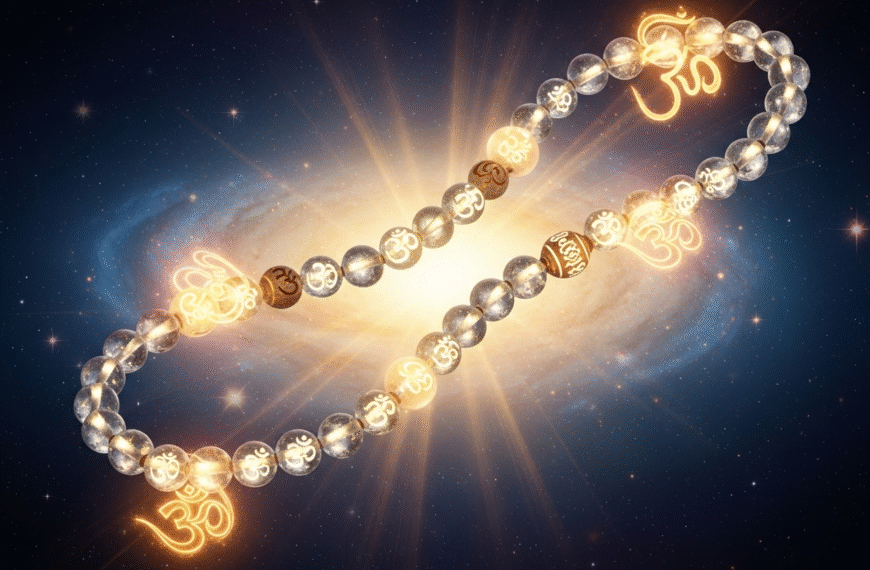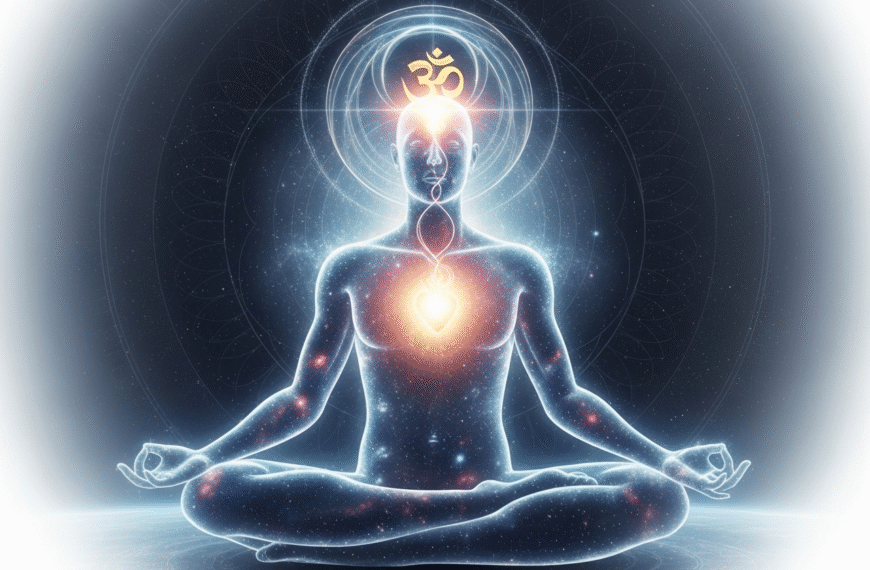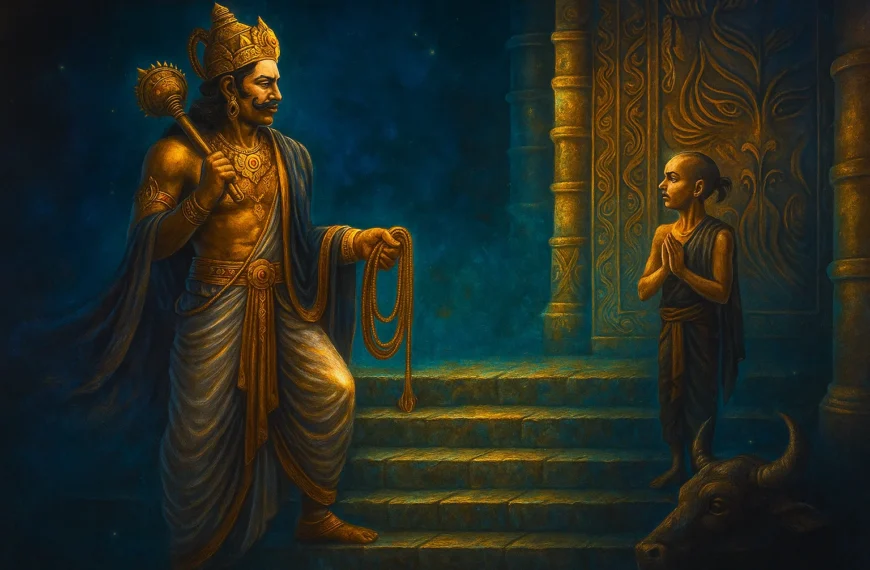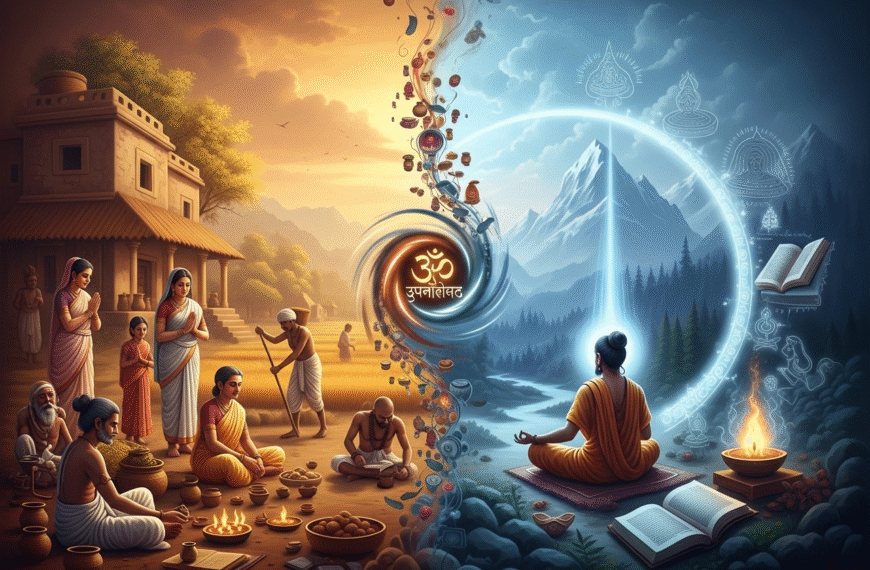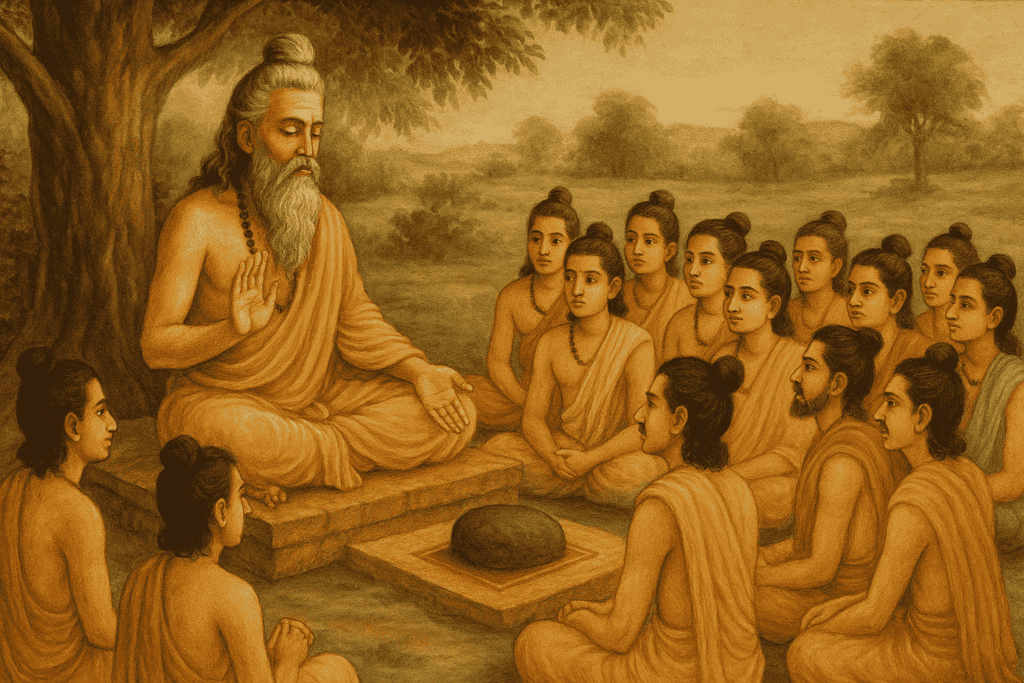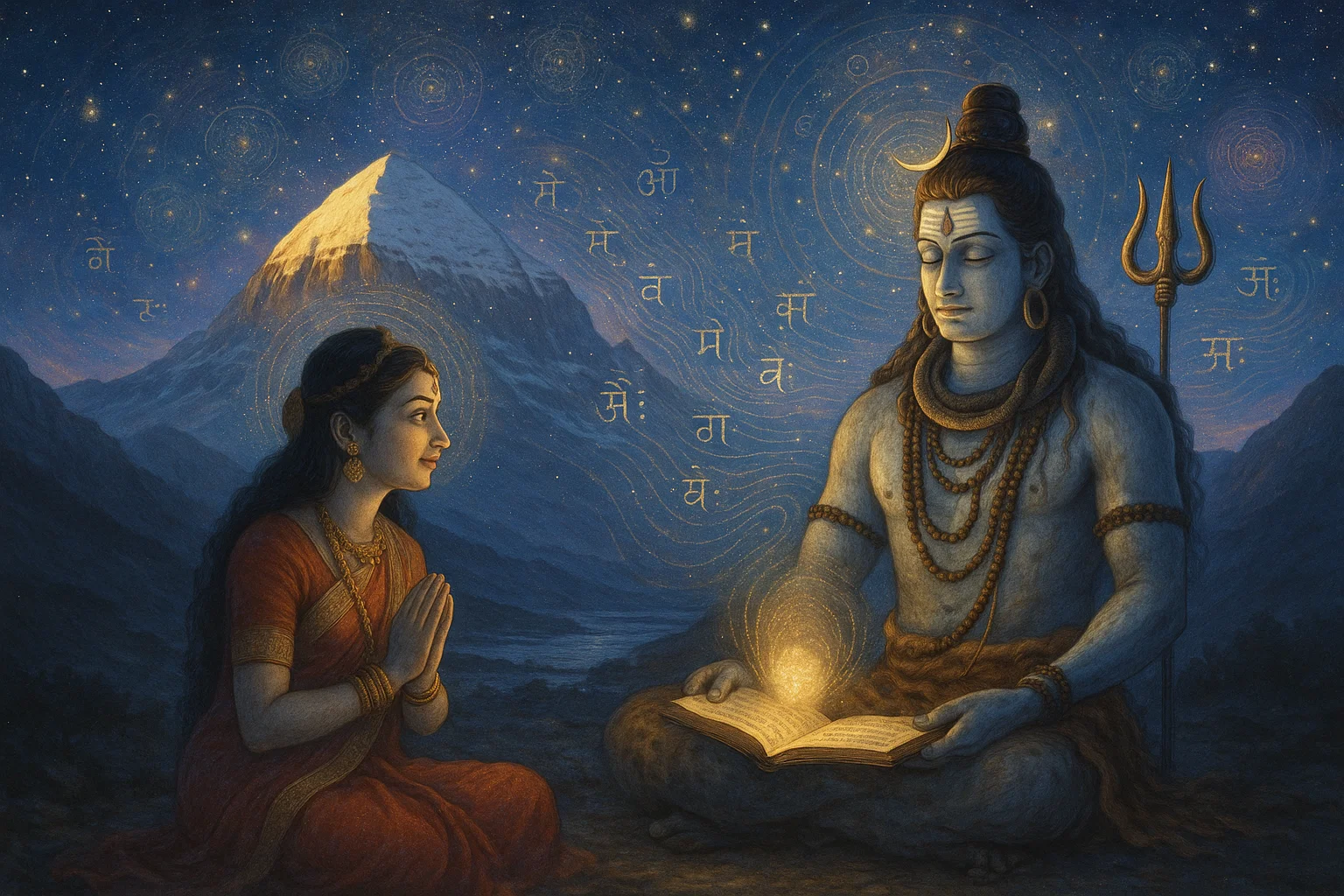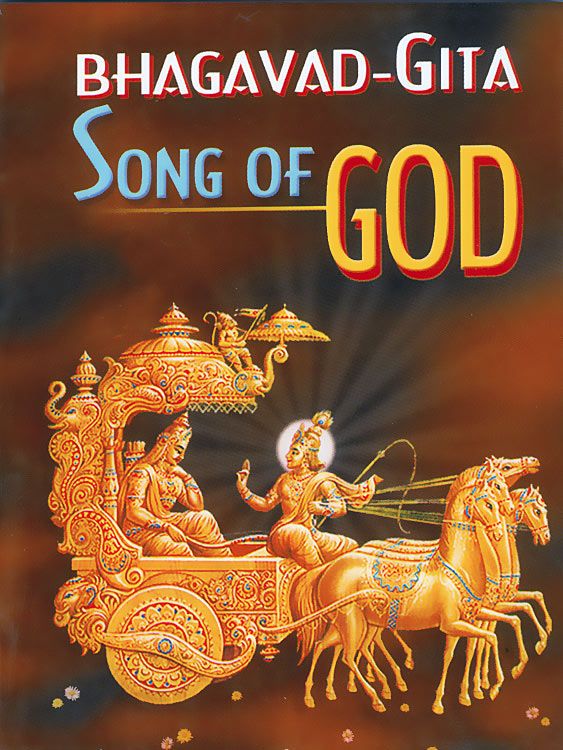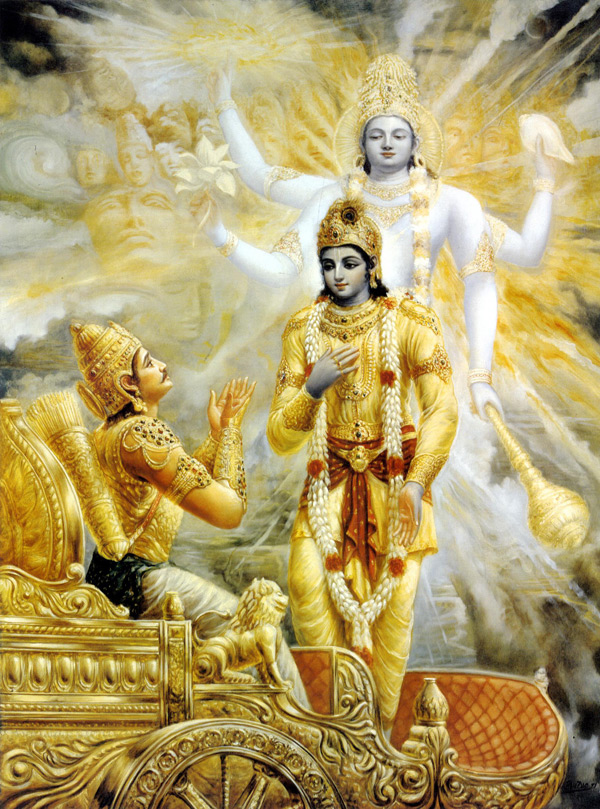Kena Upanishad: Its very name, Kena (meaning “By whom?”), is not a statement but a question—a doorway inviting us into the most profound inquiry of human existence.
Deep within the sacred chants of the Sama Veda, one of the world’s most ancient scriptures, lies a gem of wisdom so concise yet so vast it can reorient our entire perception of reality. This is the Kena Upanishad. Its very name, Kena (meaning “By whom?”), is not a statement but a question—a doorway inviting us into the most profound inquiry of human existence. It is less a text to be memorized and more a spiritual journey to be undertaken, a dialogue that has echoed through millennia and speaks directly to the heart of the modern seeker.
Om. May every part of me – body, voice, breath, sight, hearing, strength, and all my senses – be filled with life and awareness.
May I always remember that the wisdom of the Upanishads points to Brahman, the ultimate reality.
May I never turn my back on Brahman, nor may Brahman ever turn away from me.
May my heart be true, and may truth be my constant companion.
May the timeless teachings of Dharma, as revealed in the Upanishads, shine brightly within me, guiding me to my true Self.
May that light grow ever brighter.
Om. Peace, peace, peace.
The Upanishad begins not with a bold declaration, but with a humble prayer, a Shanti Patha or peace invocation. It is a plea for our entire being—our limbs, our speech, our breath, our senses—to become strong and harmonious, not for selfish gain, but to be worthy instruments for perceiving the ultimate truth, known as Brahman. This opening sets a universal tone: the quest for truth begins with the preparation of the self, a sincere desire for wholeness and a relationship of mutual fidelity with the Divine. “May I never deny Brahman,” the seeker prays, “May Brahman never disown me.”
The Seeker’s Inquiry: Who is the Director of this Play?
Once this sacred space of intention is created, the student poses a series of questions that are simple in their wording but cosmic in their scope. They are the questions that arise in the quiet moments of our own lives, when we look beyond the mechanics of existence and wonder about the source of it all.
“Wished by whom is the mind directed to fall (on its objects)? Directed by whom does the foremost vital air move? By whom is wished this speech which the people utter? Who is the radiant being that unites the eye and the ear (with their objects)?”
In an age where we can map the neural pathways of thought and measure the electrical impulses of the senses, these questions push us deeper. They ask not how the mind thinks, but by what essential Power it is capable of thought. They inquire into the unseen energy that animates our every breath, the silent source from which all expression flows. Who, or what, is the ultimate conscious agent behind the curtain of our perception?
The Teacher’s Enigmatic Answer: The Unseen Knower
The teacher’s response is a masterpiece of spiritual instruction, designed to shift the seeker’s perspective from the external world to the inner reality. The answer is not a name or a form, but a pointer to the very consciousness that is asking the question. This ultimate reality, Brahman, is:
“…the ear of the ear, the mind of the mind, the speech of speech, the vital air of the vital air, and the eye of the eye…”
This poetic verse reveals a profound truth: Brahman is not an object to be seen, but the eternal Subject, the very Light of consciousness by which all seeing happens. The eye cannot see itself; fire cannot burn itself. Similarly, our senses and mind, which are instruments of perception, cannot turn back and perceive their own source. This source is forever beyond their grasp, because it is their very foundation.
Therefore, the Upanishad declares that this Reality is “distinct indeed is That from the known and distinct from the unknown.” It transcends our neat categories. It is not something we can capture with data or define with logic (the known), nor is it a mere void or absence (the unknown). It is a living, conscious reality that defies intellectual containment. To know this is the beginning of true wisdom.
The teacher then guides the student away from mistaking the symbol for the substance:
“That which is not uttered by speech, that by which the word is expressed, know That alone to be Brahman, and not this (non-Brahman) which is being worshipped.”
This is a powerful, recurring refrain, applied to each sense. It is a timeless caution against confusing our concepts, our rituals, or our personal ideas of God with the formless, boundless Reality itself. The true worship is the recognition of that inner Power which animates the mind to think, the eye to see, and the ear to hear.
The Paradox of Knowing: Humility as the Path
How, then, can one “know” this unknowable reality? The Upanishad introduces a beautiful and humbling paradox. If you think you have understood Brahman perfectly, you have understood very little. The ego, with its desire to possess and define, cannot grasp the infinite.
“It is known to him to whom It is unknown; he to whom It is known does not know It. It is unknown to those who know, and known to those who know not.”
This is not a riddle meant to frustrate, but a pointer towards a different kind of knowing—an intuitive, experiential awakening. It is the humble recognition of a mystery far greater than our intellect. The scientist who stands in awe of the cosmos, the artist who feels a creative force move through them, the meditator who touches a profound silence—they are all closer to this “unknowing knowing” than the scholar who has merely memorized doctrines.
Realization dawns when Brahman is felt as the “inner Self (of cognition) in every state of consciousness.” It is the constant, silent awareness that witnesses our waking, dreaming, and deep sleep. To perceive this witness is to attain a strength that comes from our own essential nature, and through this profound knowledge, one achieves immortality—a release from the fear of death and the limitations of the small self.
The Parable of the Gods: A Tale of Cosmic Humility
To bring this abstract teaching to life, the Upanishad tells a captivating story. The devas (gods or celestial beings, representing the powers of nature and the mind) have just won a great victory. Swollen with pride, they celebrate, thinking, “Ours alone is this victory, ours alone is this glory.”
Sensing their arrogance, Brahman appears before them as a mysterious, worshipful being—a Yaksha. The gods, unable to recognize the source of their own power, are baffled. They send Agni, the god of fire, to investigate. The Yaksha asks Agni, “Who are you, and what power do you have?” Agni boasts, “I am the great god of fire! I can burn anything on earth.” The Yaksha places a single blade of grass before him and says, “Burn this.” Agni unleashes all his might but cannot even singe the humble blade. Humbled, he retreats.
Next comes Vayu, the mighty god of wind. He boasts, “I am the god of wind! I can blow anything away.” The Yaksha places the same blade of grass before him and says, “Move this.” Vayu summons all his storms and gales but cannot stir the blade of grass. Defeated, he too returns.
Finally, Indra, the chief of the gods, approaches. As he gets near, the Yaksha vanishes. In its place appears Uma, a radiant woman personifying Divine Wisdom. Indra, now humble and ready to learn, asks her, “Who was that mysterious being?”
She reveals the truth: “It was Brahman. In the victory that was Brahman’s you were revelling in joy.”
This timeless allegory is a mirror for our own lives. Our talents, our intellect, our strengths—like the powers of the gods—are not truly our own. They are gifts flowing from a universal source. The moment ego claims ownership, we become blind to this source. But when we are humbled—when our own power fails us before the simple, profound mystery of existence (the blade of grass)—we become open to receiving true wisdom.
The Path to Realization: A Life of Truth and Awareness
The Upanishad concludes not with complex doctrines, but with simple, elegant guidance. The realization of Brahman is not a distant goal but an immediate potential, an experience as swift and illuminating as a “flash of lightning or… the winkling of the eye.” It is a sudden, intuitive grasp of the reality that is always present.
This sacred knowledge is not built on theory alone. Its foundation is a life of integrity. The text states beautifully that “austerity, self-restraint and action are the feet” of this wisdom. The sacred scriptures are its limbs, and “truth is its abode.”
The Kena Upanishad is an invitation to live this truth. It asks us to look at our own lives and inquire: By what power do I think, feel, and act? In doing so, it guides us away from the noise of the external world and into the silent sanctuary of our own hearts. There, we discover that the source of all power, all beauty, and all consciousness is not separate from us, but is the very essence of who we are. He who knows this, the Upanishad promises, transcends all limitations and becomes firmly established in a state of infinite, blissful consciousness. He becomes firmly seated in Brahman.

